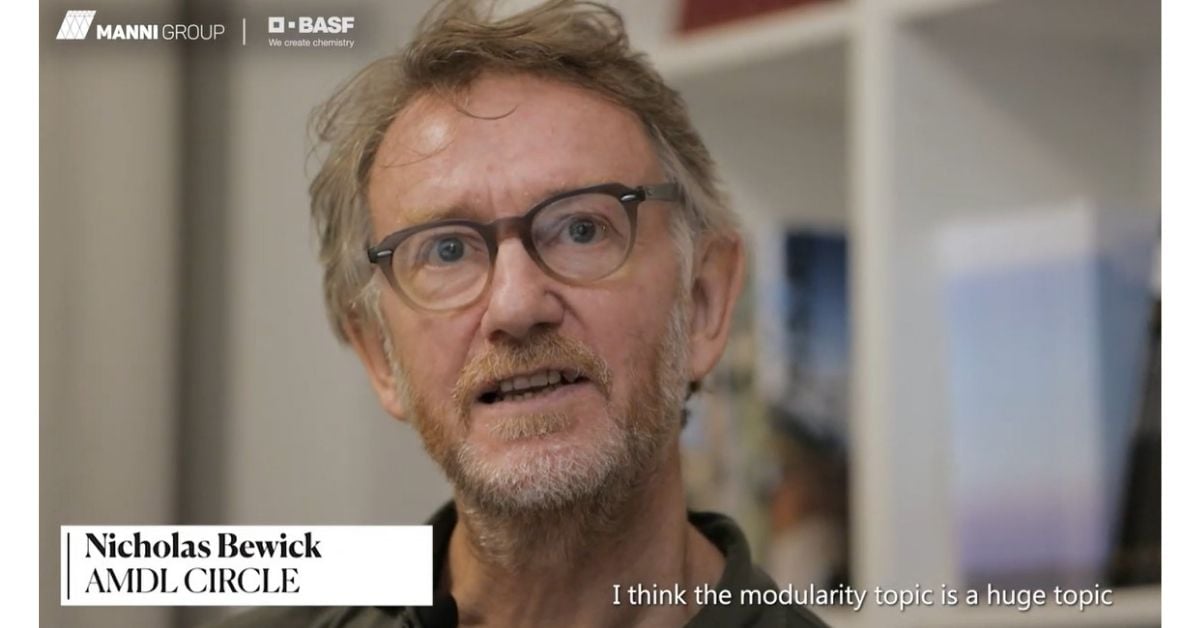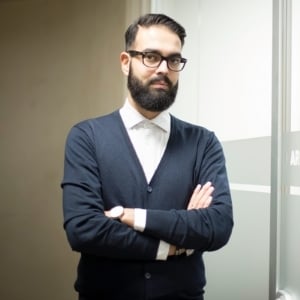In this Architectural Talks interview, Manni Group meets architect Nicholas Bewick of AMDL Circle, the architecture, design and graphics firm founded by architect Michele De Lucchi, known worldwide for his design work.
Here is what you will find in this content:
AMDL Circle: the firm by Michele De Lucchi
AMDL Circle is the architectural firm founded in Milan in 2019 by Michele De Lucchi, architect, designer and writer, from whom it takes its name: the acronym comes from Architetto Michele De Lucchi, together with Circle, which stands for all the creative minds behind the development of the projects.
The firm encompasses the 37 years of experience of Michele De Lucchi, who runs it together with Angelo Micheli. It brings together a group of interdisciplinary designer-explorers and innovators and has a strongly humanistic imprint.
Artists, anthropologists, psychologists, humanists, futurologists and other minds contribute to the high quality of the firm's projects.
Among the projects realised by AMDL Circle are:
In our interview, Nicholas Bewick, Art Director & Project Director of AMDL Circle as well as a long-time collaborator of Michele De Lucchi, tells Daniel Elber, Chief Marketing and Communications Officer of Manni Group, about the firm's thinking on the topics of modularity and sustainability in architecture.
Nicholas Bewick explains their commitment to the reuse of the components used in their projects and how these are almost never an end in themselves, but rather part of a broader vision that also takes into account future realisable works.
As we will see during the interview, the theme of sustainability is very dear to the firm, which, thanks to the visionary ideas of its founder, wants to challenge the status quo to find new ways to build a better future.
Manni Group interview with Nicholas Bewick of AMDL Circle
In the following we get to the heart of the interview with Nicholas Bewick of AMDL Circle.
AMDL Circle is obviously very much linked to the world of design: this certainly means having to deal with the issues of mass production, modularity and thus the complexity behind them. Is anything transposed into architecture? If yes, is this a benefit or a complexity for you? How do you interpret it?
Modularity is a big theme that fascinates me: partly because of the British roots of the architecture school I attended, but also because of the way of thinking and rationalising design.
At our firm, we do not have such a precise and defined logic: in a way, we try to 'break' what is modularity. Right now there is an increasing interest in adaptability, life cycle, reusability of our buildings and products.
I am not talking about controlling dimensions, but about the idea of disassembling our designs and reusing the components.
Lighter constructions that can be disassembled to give new life to the components used: does this also relate to this aspect?
Yes, it is an increasingly topical issue. We do not have a magic wand or the solution, but it is becoming very important for us to try to imagine how our projects can be reused, changed and experienced differently.
We hardly ever think of a project as 'closed' and an end in itself, without this perspective.
At what point in the design process do you choose which construction technology to use?In the early stages or after the creative idea has already been developed?
I think that even from the first sketch, from the first idea, there is already the intention to make a design in steel, wood or stone. I think it is part of our DNA, of how we develop projects, and that choice is linked to a sensitivity to the material, the location, the climate, the historical context, the environment, the impact of what we are doing.
The word 'sustainability' is very important at the moment. I don't believe much in having to do this, that is, in following a set of rules linked to a certification system.
I hope we have the ability, the sensitivity, the creativity to choose what is right, and this comes from experience, from the relationship with the supplier and the people who produce our designs.
Does the investor sometimes make specific demands on taking one path rather than another? Are you influenced in this aspect or are you usually free?
We are generally quite free. I think that, in any case, those who come to us asking for a project accept that the choice of material and construction method is part of our way of thinking and accept our position on certain issues.
AMDL Circle is very much about sustainability. What are your suggestions or predictions that you would like to give to designers with regard to this issue?
We as a firm think that, in the end, the great quality of the project lies in how we work with nature.
The building is a container, a space, then the real challenge - in a way - is to work more and more with nature, and to understand the relationship we have with it, the benefits we can derive from it, to learn from the natural world and try to understand how it can help our situation to try to slow down the damage we are doing to the earth right now.
They say we should plant more than a trillion trees to try to slow down the problem we have today. Hopefully, sustainability will become a priority for everyone.
Your firm is also well known for its visionary approach in itself. Would you like to tell us more about Earth Stations?
The Earth Stations project developed from of a series of Michele's thoughts.
Often the architect is happy to communicate about what he has already done. We want to communicate what we want to do in the future, and Earth Stations is our vision of space, of how we can share environments, collaborate, arrive and then leave, in the sense of arriving at a destination to take the mind, the way of thinking about the future and then hoping to improve it.
They are positive projects in the sense that they try to show that we can use architecture to improve our world.
What suggestions do you feel like giving the young designers at YACademy?
I think curiosity is fundamental. You have to live with your eyes open, not just YACademy students, but everyone.
I think there is a big discussion right now about what the job of an architect is.
I hope that this debate, this recent awareness and new opportunities, brought both by technology and by a different way of thinking and sharing, can create a new but also - in a way - radical vision.
There is room for young people to produce new solutions, new ideas for our future.
I hope that, just as we had this opportunity, the new generations will have the same chance to do something important.


